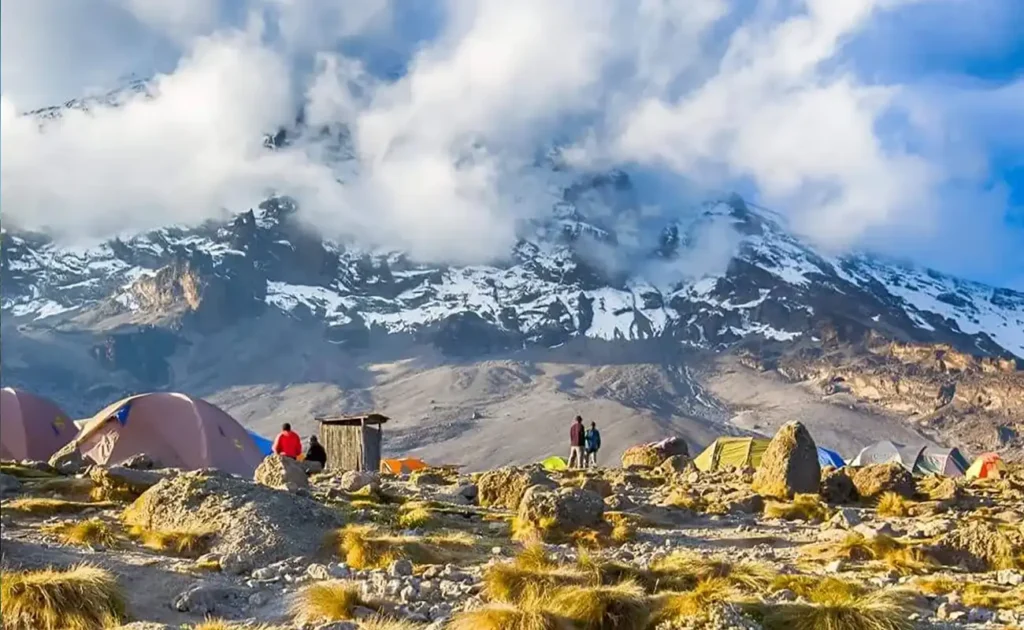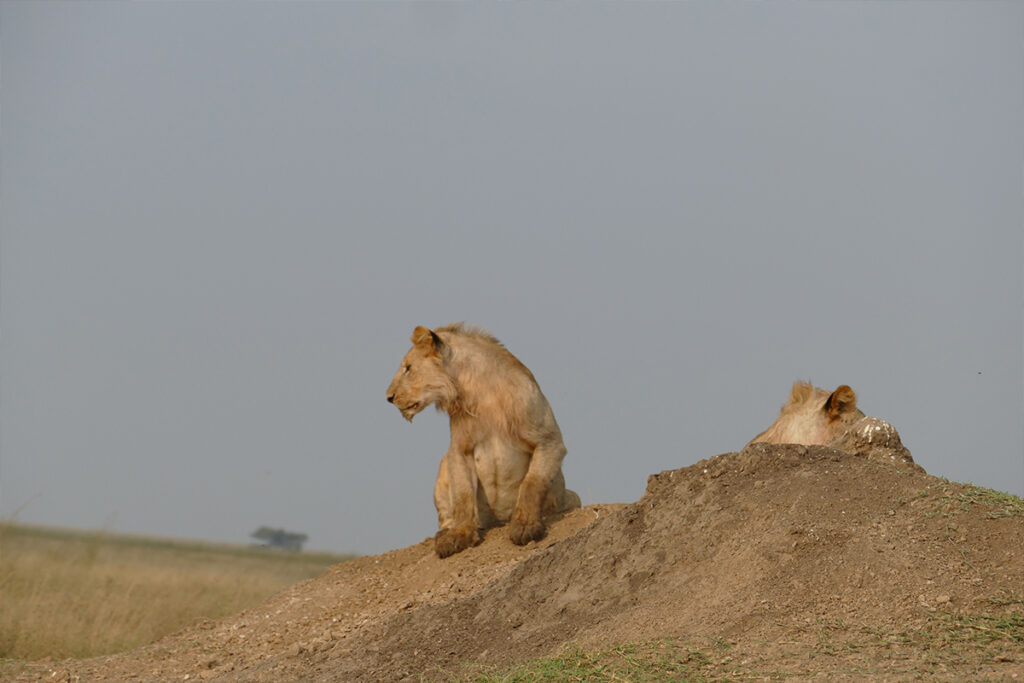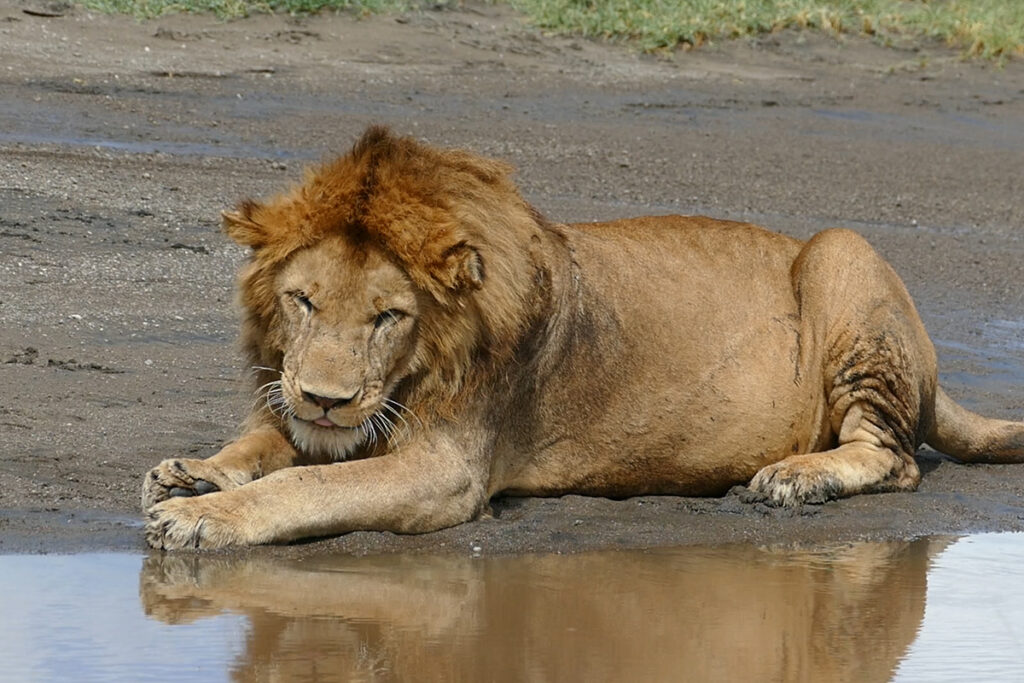Stepping into the vast plains of Tanzania, did you know that the Serengeti hosts one of the largest animal migrations on the planet? This magnificent spectacle draws enthusiasts and experts alike, all eager to witness a natural marvel that seems almost too epic to be real. Embarking on a group safari here offers not only a chance to see this incredible event but also to connect and learn with fellow wildlife lovers.
The history of Tanzania as a prime safari destination dates back to the early 20th century when explorers documented its vibrant ecosystems. Today, around 1.5 million tourists visit annually, many opting for group safaris to balance cost, camaraderie, and expertise. These excursions ensure a holistic understanding of the region’s diverse habitats, providing insights that resonate with participants long after the experience.

Tanzania Group Safari: An Overview
Tanzania is a land of wonder, where vast plains stretch under the endless sky. On a group safari, you can explore incredible natural beauty alongside friends or new companions. The Serengeti, famous for its Great Migration, is a highlight for many visitors. Observing millions of wildebeests and zebras moving together can be awe-inspiring. For anyone planning a trip, this breathtaking spectacle should be on the itinerary.
Besides wildlife, Tanzania offers rich cultures to explore. Interacting with local tribes like the Maasai adds depth to the adventure. You’ll learn about their traditions and lifestyle, creating memories that last far longer than the safari itself. Meanwhile, the majestic Mount Kilimanjaro stands tall, inviting altitude-seekers from around the globe. Climbing it is a challenge that many visitors strive to conquer.
Group safaris offer practical benefits as well. Traveling with a group can reduce costs significantly, making it more affordable for everyone. Additionally, professional guides enhance the experience by sharing detailed insights on wildlife and landscapes. This shared knowledge enriches every sight and sound encountered throughout the trip. According to this post, new safari trends are continuing to evolve, offering even more unique experiences.
Tanzania runs deep with history, tied to its vibrant present. Its coffee is famous, enjoyed by millions around the world. Learning about this process, as noted in here is the article, adds another layer of interest. Understanding the journey from bean to cup complements the unforgettable safari experience. Indeed, a group safari in Tanzania promises adventure, nature, and new friendships all rolled into one.
Experience the Spectacle: Animal Migrations in the Serengeti
The Serengeti’s Great Migration is one of nature’s most breathtaking shows. Every year, over two million animals, including wildebeests, zebras, and gazelles, embark on a journey in search of fresh grazing. This epic movement forms a constant cycle, depending largely on rainfall patterns. As they trek across the vast plain, these animals face numerous challenges. Predators, such as lions and crocodiles, make their journey perilous yet fascinating to witness.
Timing is crucial for those wishing to observe the migration. The best time to visit varies based on the specific segment of the migration you wish to see. Many travelers target the dramatic Mara River crossings, where herds make daring, often dangerous leaps into water teeming with crocodiles. Opting to visit during dry months can improve visibility, ensuring a more complete experience. Regardless of the chosen season, an encounter with this phenomenon will surely leave a lasting impression.
Different viewpoints provide unique perspectives on the migration. Viewing from the ground offers an up-close experience with the animals, while hot air balloon rides showcase stunning aerial vistas. Walking safaris allow smaller, intimate group explorations, enhancing the sense of immersion. Guides are essential in ensuring safety and maximizing the experience, as they expertly navigate the terrain and explain migration patterns. Considering these options when planning will help tailor your adventure.
The Serengeti hosts a variety of flora and fauna outside of the migration, surprising visitors with its diversity. Observers may spot elephants, giraffes, and antelope in various regions. These habitats support a balanced ecosystem, sustaining numerous species year-round. As a protected park, efforts are dedicated to preserving this natural wonder for future generations. Experiencing the spectacle is not just a one-time event; it is a lifelong memory.
History of Tanzania as a Safari Destination
The history of Tanzania as a safari destination dates back to the early 20th century. Pioneers and explorers were among the first to discover its rich wildlife and breathtaking landscapes. Their stories of adventure and exploration quickly attracted more visitors. Over time, Tanzania became renowned for its vast national parks and the incredible biodiversity contained within them. These natural preserves started to draw attention from conservationists worldwide.
In the 1950s and 1960s, Tanzania saw significant growth in its tourism industry. National parks like Serengeti and Ngorongoro Crater were designated to protect wildlife and habitat, boosting tourism interest. With political independence in 1961, Tanzania focused on preserving its natural resources, which further fueled the safari industry’s development. Tourists flocked to see the unique ecosystems and animal migrations. Investment in infrastructure, such as lodges and roads, made access easier for visitors.
Safaris in Tanzania evolved greatly over the decades. Initially, they were exclusive experiences for the wealthy, often involving luxurious settings and provisions. Today, safaris cater to a wide range of budgets and preferences, from luxury lodgings to budget-friendly camping sites. This accessibility allows more people to witness the wonders of Tanzania’s wildlife firsthand. New trends and eco-friendly approaches continue to shape how safaris are experienced.
Tourism remains a vital part of Tanzania’s economy, contributing significantly to employment and development. The government’s emphasis on sustainable tourism helps ensure that both visitors and wildlife coexist harmoniously. Conservation projects have been crucial in maintaining healthy animal populations. Continued efforts in protecting biodiversity keep Tanzania a top safari destination. With its rich history and dynamic adaptations, Tanzania continues to enchant travelers from around the world.
Benefits of Group Safari in Tanzania
Joining a group safari in Tanzania offers numerous advantages that enhance the overall experience. One of the major perks is cost-sharing, allowing you to split expenses like transportation, guides, and accommodations. Traveling in a group also means having a guide who knows the best spots to see amazing wildlife. This expertise ensures you experience the safari’s highlights without missing a beat. In addition, shared adventures often contribute to building new friendships.
Safety is another critical benefit of group safaris. With experienced guides leading the way, groups can navigate the African wilderness with confidence. Guides are well-versed in safety protocols, minimizing risks and enhancing the viewing experience. As a result, you can focus on taking in the stunning views and observing diverse animals in their natural habitats. Also, being in a group can be reassuring when encountering larger animals.
The social aspect of group safaris cannot be overlooked. Sharing thrilling encounters with others can make the adventure even more memorable. Whether discussing the day’s sightings around a campfire or sharing tips for capturing the best photos, the sense of camaraderie adds depth to the experience. This interaction often leads to lively storytelling and exchange of knowledge, providing insight from travelers with varied experiences.
Group safaris often come with organized itineraries. This structure saves you the hassle of planning daily activities, allowing you more time to immerse yourself in Tanzania’s beauty. With a set schedule, you’ll know exactly when to expect the drive to National Parks or the exciting night safari. You’ll also benefit from opportunities to learn from guides who provide fascinating information and stories about wildlife and the cultural backdrop. Such insights enrich your understanding of the country and its wildlife.
Finally, group safaris encourage sustainable tourism practices. This organized travel reduces individual disturbance to the environment, promoting conservation efforts in Tanzania’s protected areas. By joining a group, you’re supporting local economies and helping conserve wildlife. Moreover, tour operators often work closely with local communities, ensuring their involvement and benefit from tourism activities. Engaging with these practices ensures your trip is both enjoyable and responsible.
Insights Gained during a Tanzania Group Safari
Embarking on a Tanzania group safari reveals a world full of knowledge and wonder. One fascinating insight is the behavior of animals in their natural habitat. Watching predators like lions hunt provides a thrilling and educational experience. You may also observe the social dynamics within herds and packs as they interact. Each observation offers a deeper understanding of wildlife behavior and ecology.
Another key takeaway is the importance of conservation efforts. Safaris often include discussions on the roles of national parks in protecting endangered species. Guides explain how tourism supports conservation financially and increases awareness. By participating in a safari, visitors contribute to these efforts. Learning about local conservation projects underscores the importance of preserving natural habitats.
Group safaris also offer cultural insights. Visits to local villages and interactions with indigenous communities, such as the Maasai, can enrich the experience. You gain firsthand knowledge about their traditions, crafts, and daily life. This cultural exchange fosters respect and appreciation for different ways of living. It also helps support the local economy through tourism activities.
Navigating the diverse landscapes of Tanzania provides valuable geographical understanding. From the vast plains of the Serengeti to the lush greenery around Ngorongoro Crater, each ecosystem tells a different story. Guides offer detailed explanations of the terrain and its formation. This knowledge deepens your appreciation for the region’s natural beauty. It’s fascinating to see how landscapes shape the flora and fauna within them.
Guided safaris often integrate lessons on biodiversity. You learn about various plant species and their relationships with animals. Understanding these connections demonstrates the complexity and balance of ecosystems. Such insights are invaluable for anyone interested in biology or environmental science. It’s an outdoor classroom where every moment is a learning opportunity.
Planning Your Tanzania Group Safari: Things to Know
When planning your Tanzania group safari, timing is crucial. The dry season, from June to October, is considered the best time for wildlife viewing. During these months, animals gather around water sources, making them easier to spot. Conversely, the rainy season offers lush landscapes and fewer crowds. Deciding when to go can significantly impact your safari experience.
Choosing the right safari package is essential for a successful trip. There are numerous options, ranging from budget-friendly to luxurious. Look for packages that include experienced guides, accommodation, and transportation. Ensure that the package covers all the national parks and reserves you want to visit. Comparing different packages will help you find the one that best fits your needs and budget.
Preparation is key to having an enjoyable safari. Pack essential items like sunscreen, insect repellent, and comfortable clothing. Binoculars and cameras are a must for capturing memorable moments. It’s also wise to bring a first aid kit and any necessary medications. Having these items on hand can make your adventure smoother and more comfortable.
Understanding the local customs and regulations can enrich your safari experience. Learning a few basic Swahili phrases can go a long way in connecting with locals. Respecting wildlife by maintaining a safe distance is crucial for both your safety and theirs. Follow the guidelines provided by your guide and park authorities. Such practices ensure that you contribute positively to the environment and local communities.
Consider the impact of your visit on the environment. Opt for eco-friendly tour operators committed to sustainable practices. Your choices can help preserve Tanzania’s natural beauty for future generations. Encouraging responsible tourism helps protect the habitats and species you come to see. By making informed decisions, you become a part of conserving this extraordinary destination.

Frequently Asked Questions
Exploring Tanzania on a safari opens up a world of adventure and discovery. Here, we address common queries to guide you in planning an unforgettable journey through the country’s breathtaking landscapes.
1. What wildlife can you expect to see on a Tanzania safari?
Tanzania is home to a remarkable variety of wildlife. Common sightings include the Big Five: lions, elephants, leopards, buffaloes, and rhinos. Beyond these, travelers often spot cheetahs, giraffes, and hippos, adding to the thrill of the adventure. The Serengeti and Ngorongoro Crater are hotspots for these majestic creatures.
Birdwatchers will also find delight with over 500 bird species to observe. From the striking lilac-breasted roller to the fierce martial eagle, there’s no shortage of avian wonders. Each ecosystem, from savannas to wetlands, offers a unique habitat, supporting diverse species throughout the year.
2. When is the best time to visit Tanzania for a safari?
The prime time for a Tanzania safari is during the dry season, from June to October. During these months, wildlife gathers around water sources, making for exceptional viewing. The dry roads also make travel smoother, enhancing your experience in the national parks. Additionally, the iconic Great Migration can be witnessed throughout this season.
However, the wet season, from November to May, presents lush scenery and fewer tourists. Birdwatching is especially rewarding during these months as migratory birds arrive. Despite occasional rain showers, the landscape’s transformation and tranquility are well worth experiencing.
3. Are there any cultural experiences to enjoy during a Tanzania safari?
Yes, Tanzania offers enriching cultural experiences alongside its wildlife wonders. Interaction with the Maasai people, known for their vibrant dress and traditions, is a highlight. Visitors can learn about Maasai customs, music, and crafts, gaining a deeper understanding of their way of life. Such exchanges add meaningful context to the safari experience.
Additionally, many safaris incorporate visits to local communities, offering insights into rural Tanzanian life. These visits often include traditional dances, meals, and opportunities to support local artisans. They provide a holistic perspective of the cultural richness within this captivating country.
4. What is a typical day like on a Tanzania safari?
A day on safari typically starts with an early morning game drive. As the sun rises, wildlife is most active, providing prime viewing opportunities. Breakfast in the wild often follows, with a picnic setup or a return to the lodge for a hearty meal. Afterward, the rhythm of the day includes afternoon relaxation and more wildlife exploration.
Afternoon game drives further explore diverse landscapes until sunset. Evenings are reserved for reflection around a campfire, where stories of the day’s adventures are shared. The tranquil setting, under a star-studded sky, provides a fitting end to an exhilarating day.
5. How should one prepare for a Tanzania safari?
Preparation for a Tanzania safari involves packing essentials and planning logistics. Layers of lightweight clothing, sunscreen, and a wide-brimmed hat are advisable to adjust to varying temperatures. Cameras and binoculars are essentials for capturing the wildlife magic of the savanna. Additionally, ensuring vaccines and malaria prevention measures are up-to-date is key to a safe journey.
Booking through reputable tour operators ensures a smooth experience and supports conservation efforts. It’s important to check travel insurance and any entry requirements. Being well-prepared allows for full immersion in the safari experience, offering peace of mind throughout the adventure.



